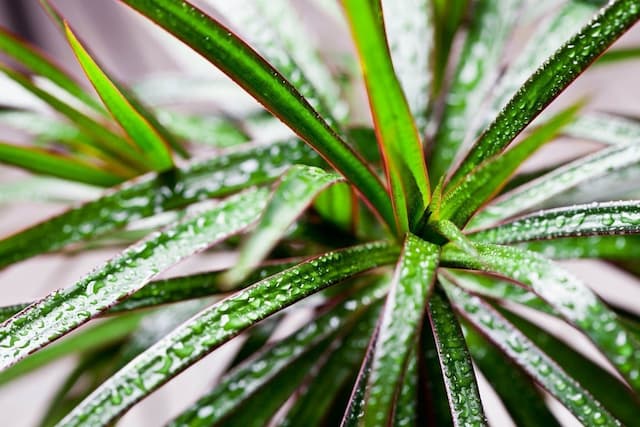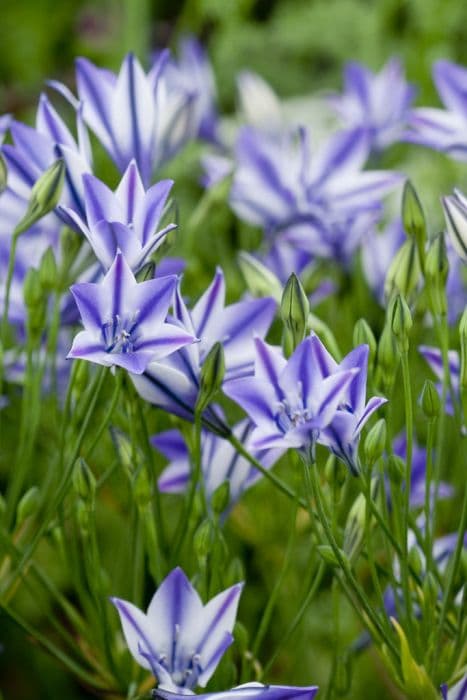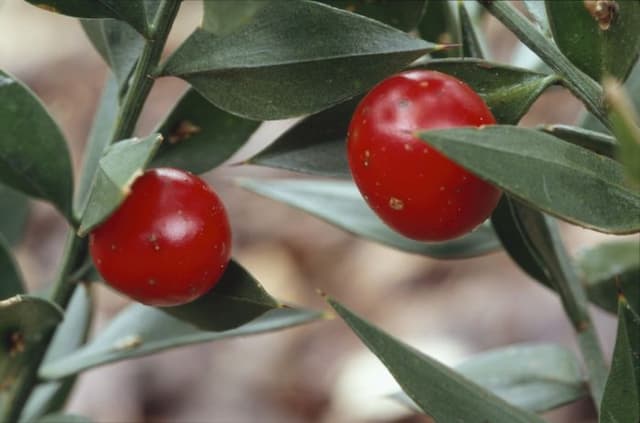Aloe yucca Yucca aloifolia



ABOUT
Yucca aloifolia, also known as Spanish bayonet or Aloe yucca, is a species of yucca plant that is native to the southeastern United States and the Caribbean. It is an evergreen shrub or small tree that can grow up to 8-15 feet tall.
The leaves of Yucca aloifolia are long and stiff, typically 2-3 feet long and 1-2 inches wide, and are arranged in a rosette pattern around the base of the plant. They are a glossy, deep green color and have sharp, pointed tips that can be dangerous if touched. The leaves are also slightly curved and have a rough texture.
The plant produces large, white, bell-shaped flowers that are arranged in large, showy clusters on tall spikes that can reach up to 8 feet tall. The flowers are fragrant and bloom in the summer.
The fruit is a small, fleshy berry that is usually red or yellow.
Yucca aloifolia has a distinctive and striking appearance, with its large rosette of glossy, sharp-tipped leaves and tall spikes of white flowers, it can make a striking accent in a garden or landscape.
About this plant
 Names
NamesFamily
Asparagaceae
Synonyms
Aloe yucca, Dagger plant, Spanish bayonet, Spanish dagger, Spanish bayonet dagger plant
Common names
Dracaena lenneana, Sarcoyucca aloifolia, Yucca aloifolia var. arcuata, Yucca aloifolia f. arcuata, Yucca aloifolia var. conspicua, Yucca aloifolia f. conspicua, Yucca aloifolia f. crenulata, Yucca aloifolia var. draconis, Yucca aloifolia f. draconis, Yucca aloifolia var. flexifolia, Yucca aloifolia var. gigantea, Yucca aloifolia var. marginata, Yucca aloifolia var. menandi, Yucca aloifolia var. purpurea, Yucca aloifolia var. quadricolor-variegata, Yucca aloifolia var. roseomarginata, Yucca aloifolia var. serratifolia, Yucca aloifolia var. stenophylla, Yucca aloifolia var. tenuifolia, Yucca aloifolia f. tenuifolia, Yucca aloifolia f. tenuifolia, Yucca aloifolia var. tricolor, Yucca aloifolia var. variegata, Yucca aloifolia var. versicolor, Yucca aloifolia var. yucatana, Yucca arcuata, Yucca atkinsii, Yucca conspicua, Yucca crenulata, Yucca draconis, Yucca haruckeriana, Yucca parmentieri, Yucca jacksonii, Yucca purpurea, Yucca quadricolor, Yucca serrulata, Yucca striata, Yucca tenuifolia, Yucca tricolor, Yucca yucatana
 Toxicity
ToxicityTo humans
Yucca aloifilia is not considered highly toxic to humans, although the sharp leaves and spines of the plant can cause physical injury if handled carelessly.
Eating the leaves or fruits of the plant may cause mild stomach upset, but it is not considered to be dangerous. The sap of the plant can cause skin irritation in some people.To pets
Yucca aloifolia is also not considered highly toxic to animals, although the sharp leaves and spines of the plant can cause physical injury if ingested or handled.
Eating the leaves or fruits of the plant may cause mild stomach upset but it is not considered to be dangerous. It's always good practice to monitor the animal if they have access to the plant and to consult with a veterinarian if symptoms occur after ingesting the plant.
 Characteristics
CharacteristicsLife cycle
Perennials
Foliage type
Evergreen
Color of leaves
Green
Flower color
White
Height
Up to 15 feet
Spread
Up to 10 feet
Plant type
Shrub
Hardiness zones
7
Native area
Southeastern United States
Benefits
 General Benefits
General BenefitsYucca aloifolia is a popular landscape plant due to its striking appearance, with its large rosette of glossy, sharp-tipped leaves and tall spikes of white flowers. It can make a striking accent in a garden or landscape;
Yucca aloifolia is drought-tolerant and can survive in a variety of climates, making it a good choice for xeriscaping (practice of landscaping with plants that require little water or maintenance);
Yucca aloifolia is a low-maintenance plant that does not require frequent watering or fertilizing;
The flowers of Yucca aloifolia are a source of nectar for hummingbirds and butterflies, making it an attractive plant for wildlife;
The roots of Yucca aloifolia can help to break up compacted soil and improve drainage. Medical Properties
Medical PropertiesYucca aloifolia contains saponins, which have anti-inflammatory properties that can help to reduce pain and swelling;
Yucca aloifolia has antimicrobial properties that can help to fight against bacterial and fungal infections;
Yucca aloifolia has been traditionally used to promote wound healing;
Yucca aloifolia has been traditionally used to help relieve respiratory conditions such as asthma and bronchitis;
Yucca aloifolia has been traditionally used to treat skin conditions such as eczema and psoriasis.
It's not recommended for consumption or medicinal use due to its sharp leaves and spines and it's best to consult a healthcare professional before using it for medicinal purposes. Other Uses
Other UsesThe leaves of Yucca aloifolia can be used to make fibers that can be used for making rope, mats, baskets, and other items;
The leaves of Yucca aloifolia can be used to make fibers that can be used for making rope, mats, baskets, and other items;
The crushed leaves of Yucca aloifolia can be used as a natural water purifier.
Interesting Facts
 Plant Symbolism
Plant SymbolismIn many Native American cultures, Yucca aloifolia is seen as a symbol of strength and resilience:
It is believed to bring cleansing and protection. The leaves of the plant are sometimes used in ceremonies to bring in harmony and balance;
In some cultures, the plant is believed to have healing powers and is used to help with physical, mental, and spiritual health;
The plant is also seen as a symbol of perseverance and determination, as it is able to survive in harsh climates and continues to thrive despite difficult conditions.
 Water
WaterYucca aloifolia is a drought-tolerant plant, so it does not require frequent watering.
It is best to wait until the soil is dry to the touch before watering. You should water the plant thoroughly, allowing the water to reach the roots, but not leaving the soil soggy.
Watering once a week should be sufficient in most cases, but you may need to water more or less frequently depending on the temperature, humidity, and other conditions in your area. Light
LightYucca aloifolia prefers full sun to partial shade. It will tolerate a wide range of light conditions, but it will grow best in bright, indirect light.
Avoid placing the plant in a location where it will receive direct sunlight, as this can cause the leaves to yellow and scorch. Temperature
TemperatureThe plant can tolerate a wide range of temperatures, but it prefers temperatures between 60-90°F.
It can tolerate temperatures as low as 20°F but it is not recommended to keep it in a spot with temperatures under 40°F for a long period of time. Pruning
PruningYucca aloifolia can be pruned to control its size and shape. Prune the plant back by cutting off the tips of the leaves with sharp, clean shears. You can also remove any dead or damaged leaves. If the plant becomes too large or unmanageable, it can be cut back to the ground. Pruning can be done at any time of the year, but it is best to avoid doing it during the coldest months when the plant is in a dormant phase.
 Cleaning
CleaningAs needed
 Soil
SoilYucca aloifolia prefers well-draining soil that is slightly sandy or gravelly.
It can tolerate a wide range of soil types, but it should be well-draining to prevent water from sitting around the roots.
The ideal soil pH range for Yucca aloifolia is between 6.0 and 7.5. Repotting
RepottingYucca aloifolia is a slow-growing plant and does not require frequent repotting. It can be repotted every 2-3 years or when it becomes root-bound.
When repotting, use a well-draining cactus or succulent soil mix and a container with drainage holes.
It's best to repot in the spring or summer when the plant is actively growing. Humidity & Misting
Humidity & MistingYucca aloifolia is a drought-tolerant plant that can tolerate low humidity levels. It does not require high humidity levels to thrive.
It is best to keep the humidity level around the plant between 30-50% humidity. It is not recommended to use a humidifier around the plant or mist it as it could lead to fungal problems. Suitable locations
Suitable locationsIndoor
All year round
Outdoor
When grown outdoors, it prefers full sun to partial shade, well-draining soil, and moderate watering and temperature
Fertilizing and repotting should be done once or twice a year in spring and summer, and avoiding fertilizing during fall and winter.
Overall, it is a low-maintenance plant that can tolerate a wide range of conditions, but it is important to provide well-draining soil and moderate watering to prevent root rot.Hardiness zone
8 - 11 USDA
 Life cycle
Life cycleThe plant goes through a vegetative growth stage during the spring and summer, during this time the plant is actively growing and producing new leaves. During the winter, the plant goes through a dormant stage, during this time the growth slows down and it doesn't need as much water or fertilization as in the growing stage.
After blooming, the plant produces small, brown seed capsules that contain small, black seeds. The plant can be propagated from seed, but it is more commonly propagated by removing offsets that form around the base of the plant. Propogation
PropogationBy SEEDS:
The seeds can be collected from the brown seed capsules that form after blooming and sown in a well-draining cactus or succulent soil mix. They should be kept in a warm, sunny location and watered sparingly until they germinate.
By OFFSETS:
offsets that form around the base of the plant can be removed and planted in their own containers. Simply dig around the base of the plant and gently pull out the offset, making sure that it has roots. Plant the offset in a well-draining cactus or succulent soil mix and give it time to adjust before watering.
By ROOT DIVISION:
When repotting an established plant, it can be divided into several smaller plants by cutting through the root ball with a sharp knife. Each section should have a good amount of roots and can be potted up separately.
By STEM CUTTINGS:
Stem cuttings can be taken from the mature plant. Cut a stem or leaf with a sharp, clean knife or scissors. Allow the cutting to callus over for a few days before planting it in a well-draining cactus or succulent soil mix.
 Pests
PestsSpider mite, Scale insects, Mealybug
 Diseases
DiseasesRoot Rot, Leaf spot









